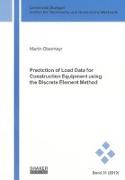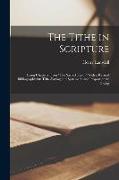Prediction of Load Data for Construction Equipment using the Discrete Element Method
BücherAngebote / Angebote:
Purchasers of construction equipment expect great reliability from their machinery. To satisfy this requirement, manufacturers may make conservative assumptions about expected operating loads. This results in a safe design, but also in excess weight, lighter designs can increase payload, lower energy consumption, and thus improve the cost effectiveness of the machinery. These contradictory objectives, reliability and cost effectiveness, drive manufacturers to refine the calculation methods used in the design of the machinery.
Besides making use of the experience of the development engineers, the identification of operating loads today is mostly based on measurement campaigns. They provide insights on the influence of the customer usage, soil type, equipment type, etc., on the operating loads. However, such measurements are complex, expensive, and can only be performed on existing machines. Thus, the long-term goal of manufacturers is to predict operating loads based on simulation methods, at least for some applications.
The first objective of this thesis is to set up a simulation model for some typical soil types, parameterize it, and validate it empirically. As a basis, the Discrete Element Method (DEM) is chosen, because it can be adapted to many different soil properties by selecting an appropriate particle interaction law. Soil types are roughly classified into cohesionless, cohesive, and cemented soil.
To be suitable for practical applications, the simulation must be possible with limited computational resources. Thus in this thesis, only spherical particles are used. This approximation requires some measures to compensate for the missing influence of the real particle shape, e.g. the use of additional rolling resistance. A model for rolling resistance with an elastic limit is also presented.
It seems hopeless to model soil by its micro-properties, such as particle shape and size distribution. Instead, the macro-properties, e.g. the bulk density, angle of internal friction, etc., are used for the parameterization of the model. The simulation model is then validated by small-scale laboratory tests on straight and vertical cutting blades, and by large-scale tests on an excavator and a bulldozer.
Despite all efforts to keep the numerical cost of the simulation low, it is still not possible to simulate events for more than a few minutes. This is not enough to predict load data. To overcome this problem, a method is presented that allows the combination of a number of typical short events so that they are equivalent to a long reference load in terms of durability.
Folgt in ca. 2-3 Arbeitstagen




